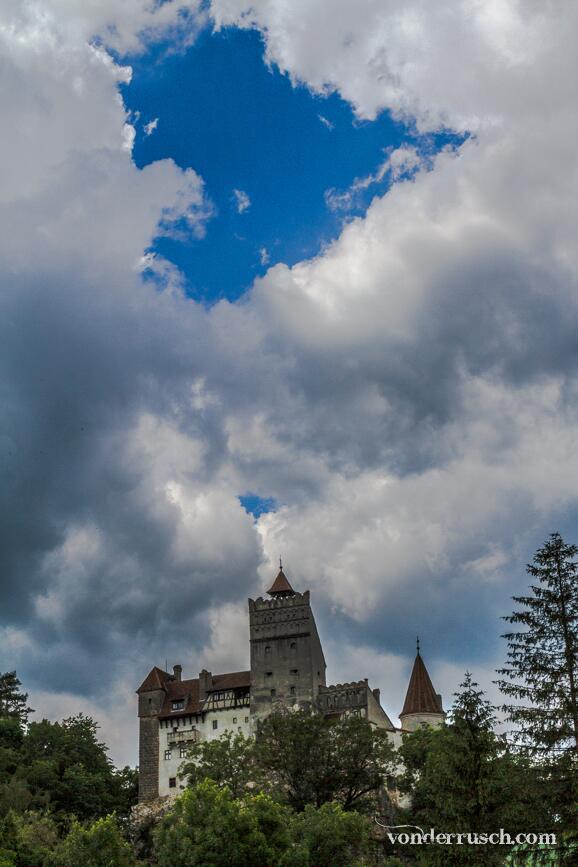A view of Bran Castle, Romania. (Daniel Williams/The Washington Post)
The Transylvanian castle erroneously reputed to be the abode of that terrifying abomination Dracula is now technically "for sale." Bran Castle, an atmospheric pile perched atop a crag, is set to be sold off by its Habsburg owners. The Romanian government has reportedly lodged an $80 million bid.
The fortress dates to the 13th century and has been occupied by various bands of warriors and knights over the years. Images of Bran Castle supposedly reached Bram Stoker, the 19th-century Irish author of "Dracula," who drew inspiration for his famous work from travelogues and sketches by British diplomats and adventurers in what was then Wallachia (modern-day Romania). He envisioned the scene surrounding the vampire's lair like so:
The castle is on the very edge of a terrific precipice. A stone falling from the window would fall a thousand feet without touching anything! As far as the eye can reach is a sea of green tree tops, with occasionally a deep rift where there is a chasm. Here and there are silver threads where the rivers wind in deep gorges through the forests.Bran Castle fits the bill and has since become a popular tourist destination for those seeking their Dracula thrills. The structure was in the possession of the Romanian Habsburg royal line, but it was appropriated by the state with the advent of Communism. After the fall of the Iron Curtain, the Habsburgs' descendants were ceded back the fortress and set about restoring it — making it the desired attraction it now is.
There is a fascinating industry of "vampire hunters" in Romania and neighboring Bulgaria, with documentary film crews and trekkers searching out the grave sites of obscure medieval counts and pirates who died unnatural deaths. But the historical beast who gave rise to the Dracula legend had nothing to do with Bran Castle — and, while his legacy is drenched with blood, he probably did not drink it.
Here's a matter-of-fact letter he apparently wrote to an ally in 1462: "I have killed peasants, men and women, old and young.... We killed 23,884 Turks, without counting those whom we burned in homes or the Turks whose heads were cut by our soldiers." Ruling over restive lands, Vlad butchered his way toward some semblance of order.
Bran Castle may not be the site of any of Vlad's murders, but his legend looms still. That's probably best for the future owners of the site, who'll need a steady footfall of visitors to recoup the enormous sum needed to acquire it.

No comments:
Post a Comment